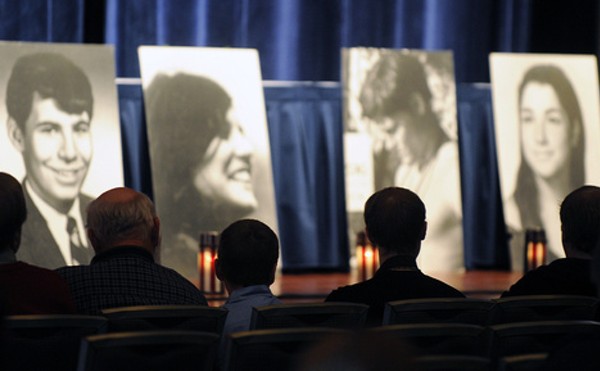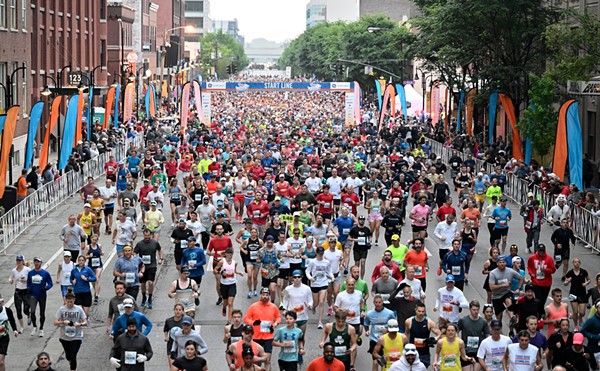Bette Davis’ famous line — “Fasten your seat belts. It’s going to be a bumpy night!” — would have been an appropriate introduction to the entire year of 2010. After a rollercoaster ride on the political front, accompanied by far too many tragedies involving gay teenagers, we finally ended on a good note with the long and hard fought repeal of “Don’t Ask, Don’t Tell.”
The discriminatory law officially will end 60 days after the president signs off on the repeal, and then we’ll have to see how its implementation goes within the military in the coming year.
While 2010 brought a lot of change and action from LGBT supporters (gay, straight and everything in between), I still find myself in the midst of what sometimes feels like my own personal battlefield as a lesbian in film school: the Hollywood industry.
If you are worried that the gays are taking over the entertainment world these days, especially with hit television shows like “Glee” and “Modern Family,” which explore several recurring gay characters, then rest assured: Although the numbers are rising, they are still relatively small.
In fact, GLAAD (The Gay & Lesbian Alliance Against Defamation) recently released their annual “Where We Are on TV” study, a review of LGBT characters scripted for the 2010–2011 season. For regular broadcast TV, 23 regularly recurring lesbian or gay characters represent 3.9 percent of all characters. Tink’s Pub, the lesbian bar on Preston Street, has more regulars than that. The number of scripted LGBT regulars found on mainstream cable networks was 40 in 2007, then 32 in 2008, all the way down to 25 in 2009, but is now back up to 35 for the upcoming season — only a slight rebound over the years. (Thanks, “True Blood.”)
If these numbers don’t make you feel better about gays not taking over the world, then just look at the movie industry. We are lucky to see about three or four quality films per year featuring gay characters who may or may not die in the end (or for lesbians, who aren’t serial killers). Currently, Netflix boasts only four titles released in 2010 in their “Gay & Lesbian” category, and one of them is the TV series “The L Word.” The shining gem of the year was Lisa Cholodenko’s critically acclaimed drama “The Kids Are Alright,” which was nominated for four Golden Globes and stars a lesbian couple played by Annette Bening and Julianne Moore. It’s been eight years since I’ve seen a popular movie with A-list talent deal seriously with a lesbian couple, albeit minimally, in “The Hours,” when Meryl Streep and Allison Janney shared a few scenes together. The dark drama also starred Julianne Moore, who shared a same-sex kiss. For years, it seems as though the talented Ms. Moore has been carrying the weight of mainstream, gay-themed movies on her pretty shoulders. (She played wife to Dennis Quaid’s gay husband in 2002’s “Far From Heaven” and best friend to Colin Firth’s gay leading man in 2009’s “The Single Man,” both of which were directed by gay men.) Although “The Kids Are Alright” sparked mixed reactions due to some plot twists, I didn’t hear anyone complaining about Bening and Moore getting lezzie together.
So, what about gay male characters in 2010? Well, December saw the release of Glenn Ficarra and John Requa’s comedy “I Love You Phillip Morris” starring Jim Carrey and Ewan McGregor as love interests. I haven’t seen the movie yet, but the trailer is full of stereotypical undertones, like when Carrey states, “It didn’t take me long to realize that being gay is really expensive, so I became a con man.” But, it is based on a true story, and maybe, since it is a comedy, no one dies in the end. Audiences can also look forward to Mike Mills’ “Beginners,” which premiered in Toronto in September and is set for U.S. release in June 2011. The film tells the story of a 75-year-old dad who finally comes out to his son (also played by Ewan McGregor) after his wife dies of cancer; it’s based on the director’s real-life experiences with his own father.
So, to 2011, as I continue my film school education, I say: I don’t know how bumpy it will be, but fasten your seat belt. Eat if you get hungry, and pull over if you get tired.





